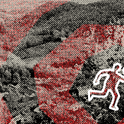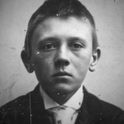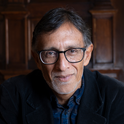On 24th May 1683, Britain's first museum, the Ashmolean, opened its doors in Oxford. Divided into three parts, it contained rooms for undergraduate lectures, a laboratory and a miscellaneous collection of specimens and cultural artefacts. Such "collections" had always been considered the preserve of an elite possessing the leisure, taste and education profitably to contemplate them—displaying one to the general public was a radically progressive notion, even though this "public" meant respectable commoners able to afford the admission. Primarily, the museum was intended for research and scholarly taxonomy; the word "museum" itself was a direct import of the Latin for a library or study.
This "scholars and the respectable" attitude would persist throughout the next century—the British Museum, opened to the public in 1759, required advance applications from prospective visitors in writing so that its mission of serving "studious and curious persons" would not be compromised. Then, in 1793, the first truly public museum was born in Europe with the opening of the Louvre, which made available for free and to all the centuries of treasures hoarded by the French monarchy. Revolution and Enlightenment had created a new kind of public space: one that people came to in order to be civilised by culture, rather than confronted by it as an instrument of others' power or as a mystery meaningful only to the elite. The Louvre embodied a shift in notions of citizenship that would spread through western culture—a reassessment, already occurring incrementally in Britain, of whom the state and a national culture could be said to be for. For the next two centuries, mass enfranchisement, nationalism and museums would be inextricably linked.

Over the last decade, this breaking down of barriers has been especially rampant, and rampantly commented upon. Astonishing things endlessly fill our screens and our inboxes, our airwaves and our streets. If you want to find out more about something intriguing, important or useful, you look it up from the comfort of your own home in that most public of private spaces, the internet. Within this culture, museums occupy a double position, as institutions which must answer simultaneously to our desire for the authentic and for spectacular intercessions and presentations.
It is frequently predicted that information culture will signify the end of many public interactions and communal activities. Yet certain aspects of the "real" are booming as never before. As Prospect's August cover story explored, the value of live musical performance has soared in direct proportion to the lost value of its increasingly ubiquitous, disposable reproductions. Prices in the art market are sky high, and climbing. "Live" experiences of art and science, similarly, are becoming more rather than less valuable to the very people most able to access reproductions of most major works of art and accounts of most major scientific discoveries from their homes. It is a trend that museums have embraced wholeheartedly—with blockbuster shows featuring famous names and radical juxtapositions (Matisse/Picasso; Warhol/Banksy); with spectacular designs, live events and elegant facilities (Guggenheim Bilbao, Centre Pompidou, Tate Modern); with dazzling re-presentations of the jewels of their collections (the V&A's John Madejski garden). At the same time, such progress is getting more difficult to maintain both economically and aesthetically. Acquisition budgets now need to total tens or even hundreds of millions to purchase substantial work; architects and designers can only revamp and rebuild so much; the novelty of blockbusting themes becomes fatiguing, and places an increasing strain on permanent collections. And where can populism go after Kylie?

When, for instance, we go to see the Mona Lisa, we inevitably construct its significance as a material object in terms of the innumerable reproductions and discussions of it we have already encountered. We find the picture amazing because it's famous, because it inspired Dan Brown's The Da Vinci Code, rather than finding it inspiring because it's an amazing work of art. Our encounter with the actual object is also, of course, compelling precisely because it promises to explain and even to restore the sequence of these relations; but the aura of mediation is not easily broken, as anyone who has ever been disappointed by the small, drab, bullet-proofed reality of the Mona Lisa will know. To experience this dissatisfaction is to favour the aura over the real—and is even to accord the aura a more luminous "reality" than its subject.
Putting it another way, there is something fundamentally bogus about many of our cultural encounters, in that the institutions hosting them are obliged to collude with as much as to dismantle the layered associations surrounding their contents. As Daniel Barenboim noted during his 2006 Reith Lectures, when classical music is piped into hotel lobbies as muzak, this inevitably deadens our engagement with it as art. "Accessibility," Barenboim explained, "does not come through populism, accessibility comes through more interest and more knowledge." And more knowledge, he might have added, is not at all the same thing as more experience, because it relies on an encounter that is individualised and integrated into understanding rather than passively received. Good curating, similarly, will always stimulate genuine interest and knowledge. But there is a kind of passivity it is dangerously easy for the democratised spaces of modern museums to breed—the blandness of fashionable ambience, within which exhibits serve simply to generate a "tone," like expensive paintings on the walls of a corporate headquarters.
The challenge, then, is to continue to broaden access to culture whilst ensuring it can be understood as, in Barenboim's words, "a way of life" as well as a mere "pattern of life." It is a telling irony that, while the majority today enjoy freedoms a tiny minority once owned, much of what the majority once took to be the most "real" aspects of their humanity are now minority experiences—the production of food, the building of shelter, the intimate processes of birth and death and disease. We possess a level of mass cultural participation impossible a century ago, yet we have lost contact with what defined, for most people throughout history, the daily texture of their lives and the matters they held in common with previous generations. It is useless to pretend we should be rebuilding Eden—but it is important to remember that there are many kinds of authenticity, and that "nature" rigorously conceived is a rich inspiration.
At the root of such a conception lies the simple fact of the human body—something that, along with our mortality, we share with all those now living and all those who have ever lived. It is, above all, the body that is systematically effaced by the present. We are at once more squeamish and more ignorant than we might like to believe. It is possible that, for a child in London, the first "real" cow they ever see will be one chopped into segments floating in a tank in a museum; it is almost certain they will become aware of death, birth, sex and violence on the screen before they do so in life. Little wonder, then, that Antony Gormley's work—much of it based on casts of "the only part of the material world that I live inside" (his body)—has over the last few years so deeply touched the public imagination.

A hundred years ago, Henry Wellcome set out to trace the story of humanity across both cultures and history. The resulting collection began as an attempt at systematising the human, but it had by the end of his life become something quite different. Sprawling through hundreds of thousands of cabinets, specimen boxes, dusty shelves and cellars, it became an inscription of both the boundless outpourings of our species and, as Borges put it, the "blind and so mysteriously reserved" nature of the objects we create. These are the twin threads any museum must interweave and, in Henry Wellcome's case, they were unified by his fascination with perhaps our most fundamental instinct—to "preserve life and health." It is this insight that, for all its modern marvels, continues to animate the museum today.
The preservation of life is both a literal and a metaphorical business. Both society and culture can be said to be elaborate exercises in preservation—assertions of that imaginative continuity the Polish poet Czeslaw Milosz evoked as "a word wakened by lips that perish, a tireless messenger who runs and runs through interstellar fields." The loss of life, however, is intractably literal and absolute; and in Wellcome Collection's galleries, mortality, healing and decay are never far away—there is boundless creation, but no pretence. We see a real heart beating on film beside a religious icon of a pierced heart; we see graphs of disease and global fatality snaking behind the intricacy of 17th-century anatomical sketches. Art, here, is a comfort and an inspiration, but not a solution—because it exists alongside our efforts to understand and explain the material world, and the recognition of our smallness and mutability that these demand. Our time is precious because it is limited; these exhibitions are beautiful and witty because of the facts they aspire towards and invoke.
Science, in this context, also reveals its artistry—the delicate processes of accumulation that have pushed our abilities onward until we can, today, list the individual chemical units that compose our every cell. In The Heart exhibition, there is a video of a chicken embryo's heart beating within an egg—a twitching bud of muscle and blood. Close by is a wax model of a human torso from the 19th century, life-size, opened to reveal a lurid heart and its vessels. Near this, splayed behind glass, are papyrus leaves from an Egyptian book of the dead, detailing how each heart is taken from the chest and weighed on the day of judgement. To see these beside one another is to see both our desire to understand and our willingness endlessly to reconfigure the unknown and the unknowable. Here is the adequacy and the tormenting wonder of human struggle, and its great lesson is deferment—that the past remains a living resource within the present whose ultimate meaning will never be determined; and that the strength of a culture depends upon its willingness to embrace rather than retreat from the facts of our common, vulnerable humanity.
Images, above, from top to bottom: Kareau figure, Nicobar Islands, circa 1880; Glass eye, circa 1890; "Silvia Petretti—Sustiva Tenofivir, 3TC(HIV)," from the series Chemical Life Support, Marc Quinn, 2005
Discuss this article at First Drafts, Prospect's blog












